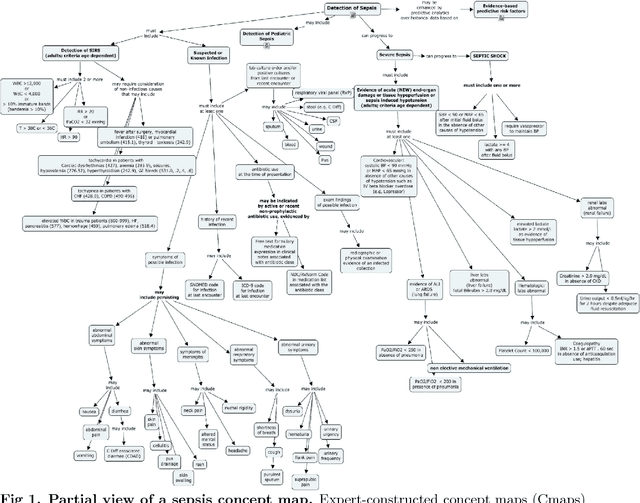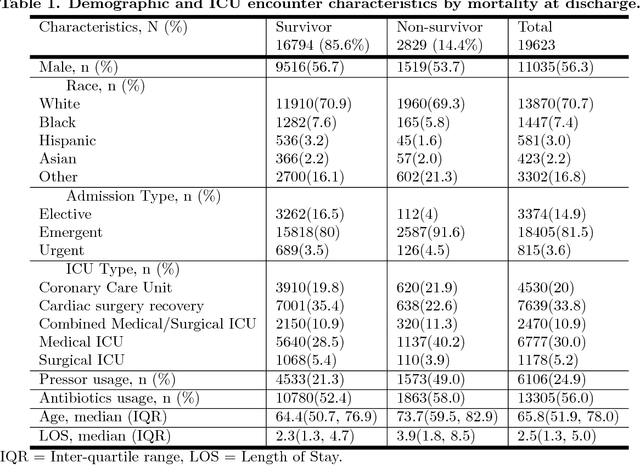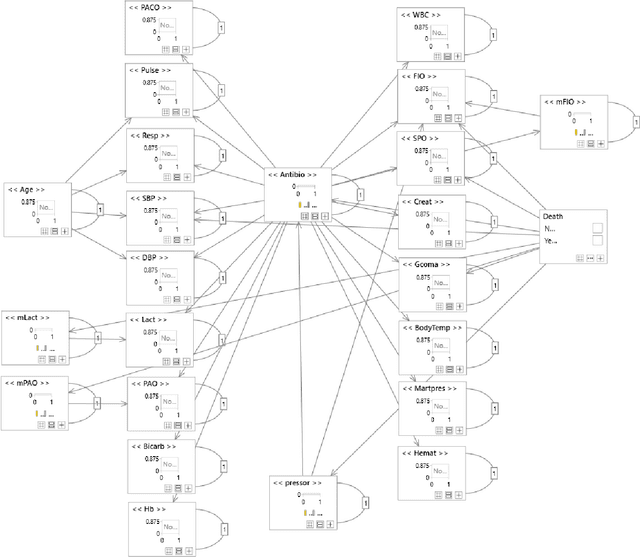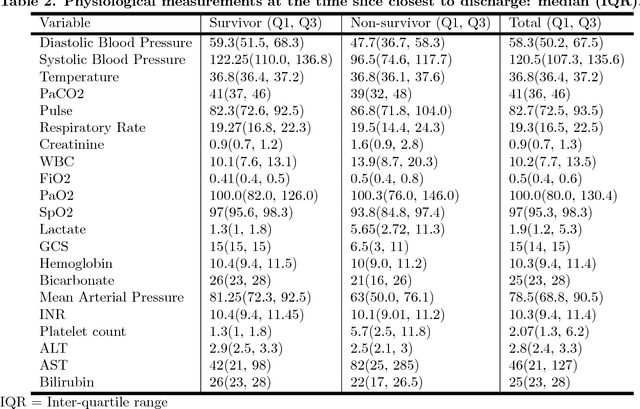Thuy L. Ngo
Semantically Enhanced Dynamic Bayesian Network for Detecting Sepsis Mortality Risk in ICU Patients with Infection
Jun 26, 2018



Abstract:Although timely sepsis diagnosis and prompt interventions in Intensive Care Unit (ICU) patients are associated with reduced mortality, early clinical recognition is frequently impeded by non-specific signs of infection and failure to detect signs of sepsis-induced organ dysfunction in a constellation of dynamically changing physiological data. The goal of this work is to identify patient at risk of life-threatening sepsis utilizing a data-centered and machine learning-driven approach. We derive a mortality risk predictive dynamic Bayesian network (DBN) guided by a customized sepsis knowledgebase and compare the predictive accuracy of the derived DBN with the Sepsis-related Organ Failure Assessment (SOFA) score, the Quick SOFA (qSOFA) score, the Simplified Acute Physiological Score (SAPS-II) and the Modified Early Warning Score (MEWS) tools. A customized sepsis ontology was used to derive the DBN node structure and semantically characterize temporal features derived from both structured physiological data and unstructured clinical notes. We assessed the performance in predicting mortality risk of the DBN predictive model and compared performance to other models using Receiver Operating Characteristic (ROC) curves, area under curve (AUROC), calibration curves, and risk distributions. The derived dataset consists of 24,506 ICU stays from 19,623 patients with evidence of suspected infection, with 2,829 patients deceased at discharge. The DBN AUROC was found to be 0.91, which outperformed the SOFA (0.843), qSOFA (0.66), MEWS (0.73), and SAPS-II (0.77) scoring tools. Continuous Net Reclassification Index and Integrated Discrimination Improvement analysis supported the superiority DBN. Compared with conventional rule-based risk scoring tools, the sepsis knowledgebase-driven DBN algorithm offers improved performance for predicting mortality of infected patients in ICUs.
 Add to Chrome
Add to Chrome Add to Firefox
Add to Firefox Add to Edge
Add to Edge